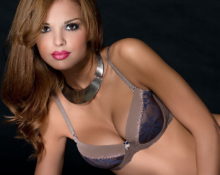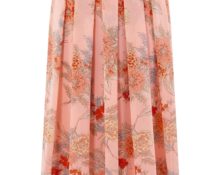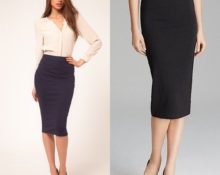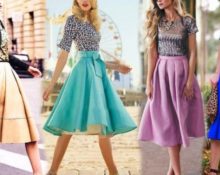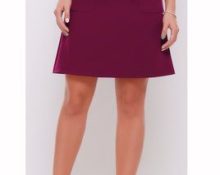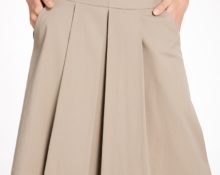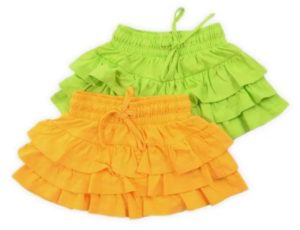 Girls love skirts, it's common knowledge. Frills, flounces and ruffles are indispensable attributes of children's and teenage fashion. Features of the Tatyanka skirt lies in the fact that they fit well on girls of different builds. And also in ease of manufacture. Besides, tiered frilly skirt "grows" with your daughter. Additional length is added thanks to new strips of fabric along the hem.
Girls love skirts, it's common knowledge. Frills, flounces and ruffles are indispensable attributes of children's and teenage fashion. Features of the Tatyanka skirt lies in the fact that they fit well on girls of different builds. And also in ease of manufacture. Besides, tiered frilly skirt "grows" with your daughter. Additional length is added thanks to new strips of fabric along the hem.
Selecting fabric and tools
We place more stringent requirements on children's clothing than on adult clothing. The material should be safe to use and also as comfortable to wear as possible.
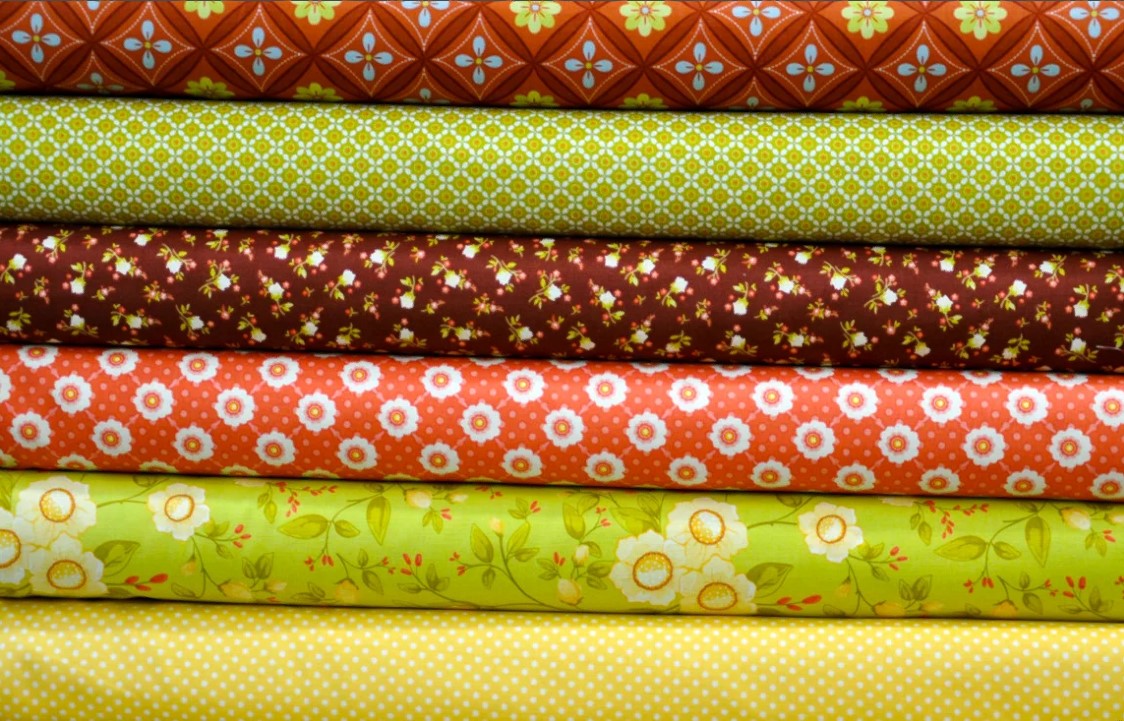
Advice! In the case of skirts, we also take into account the ability to drape and keep its shape well. There are few sights as unpleasant as a wrinkled skirt!
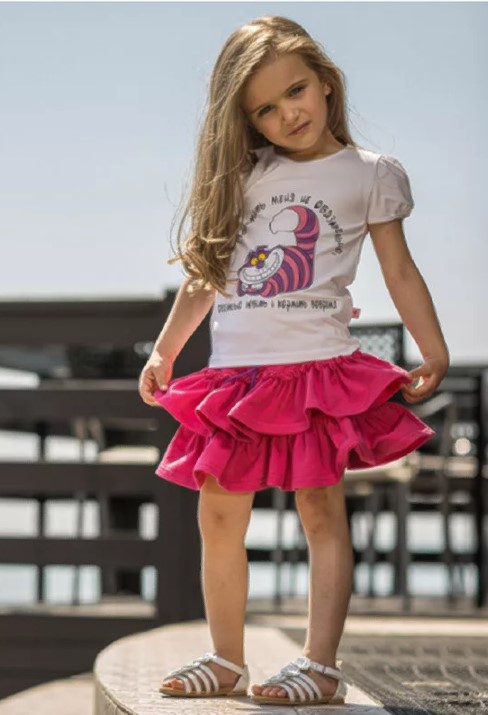 Material selection criteria:
Material selection criteria:
- naturalness;
- hygroscopicity;
- breathability;
- paint fastness;
- difficulty of care.
The most popular fabrics:
- cotton - thick chintz, calico, flannel, cambric, sewing, corduroy, denim;
- viscose;
- polyester – velor, gabardine;
- bamboo fiber;
- knitted fabrics of various compositions.
The density of the fabric depends on the time of year when the product will be used, as well as on its purpose, that is, do you need a smart skirt or a casual one.
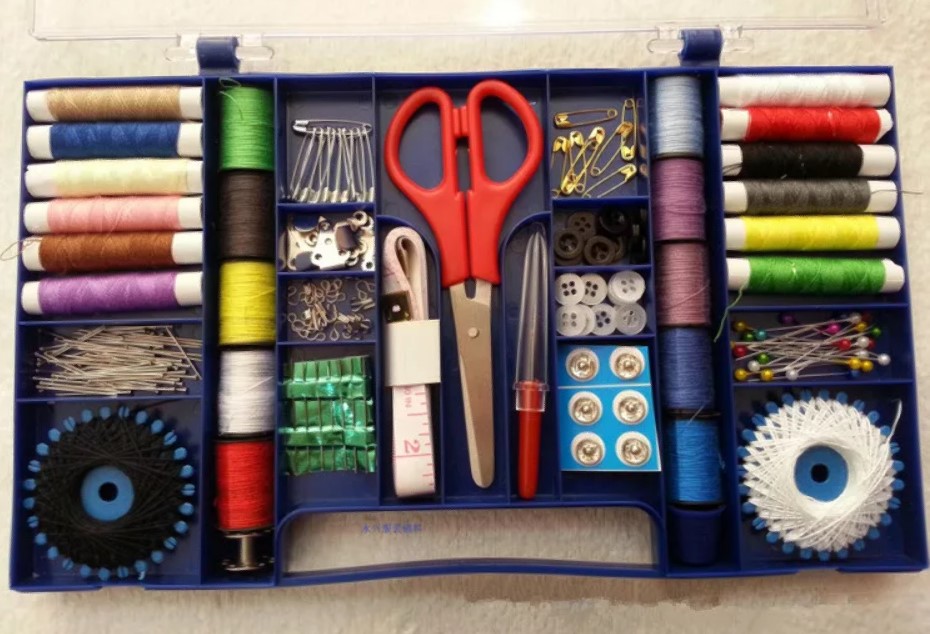 Tools and auxiliary materials:
Tools and auxiliary materials:
- Tailor's chalk, scissors.
- Pins for fixing fabric.
- A sewing machine, preferably capable of overlock stitching.
- An overlocker is an ideal option for overcasting the edges of numerous frills; it is desirable, but not necessary.
- Linen elastic.
- Decorative elements - brooches, braid, ready-made appliques, embroidery.
Skirt styles with frills for girls
Ruffles, single or in several tiers, can complement a skirt of almost any style; the choice is limited only by the age of the child and a sense of proportion.
The most common:
Skirts are American. Several tiers of frills, each ending in ruffles. There are about 8-10 layers of fabric per skirt.
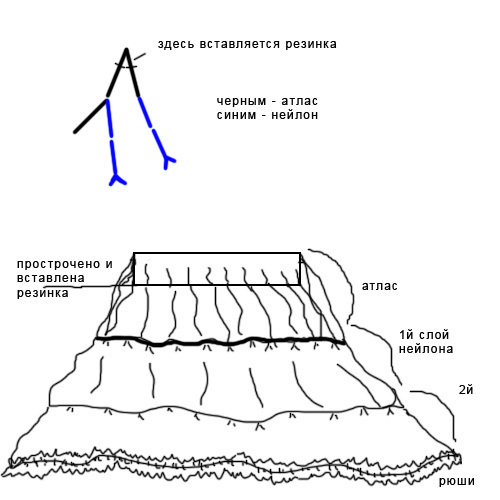
Straight models with frills and flounces along the hem. As an option - a skirt with a straight yoke.
Skirts with a “sunny” cut, from bell to double and triple sun. The gathers, as a rule, go along the edge.
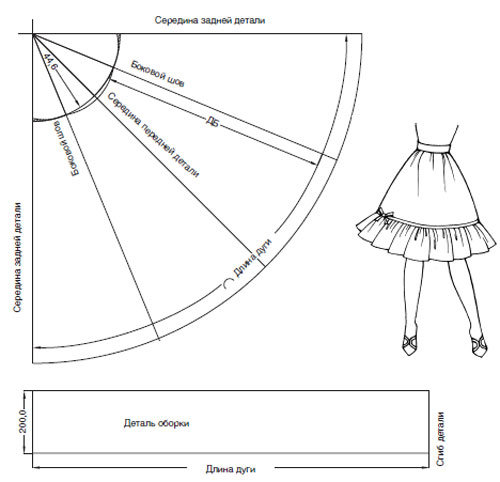
"Tatyanka" with frills and flounces.
Construction of the base pattern
The simplest pattern looks like this:
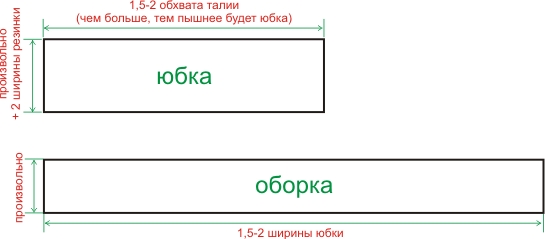
We take measurements:
- waist circumference;
- hip girth;
- overall skirt length;
- number of frills;
- length of frill/frills.
We take into account the girl’s age; if the difference in the volume of the waist and hips is not yet particularly visible, we take any value, and if the girl is older, it is better to use the volume of the hips as a basis.
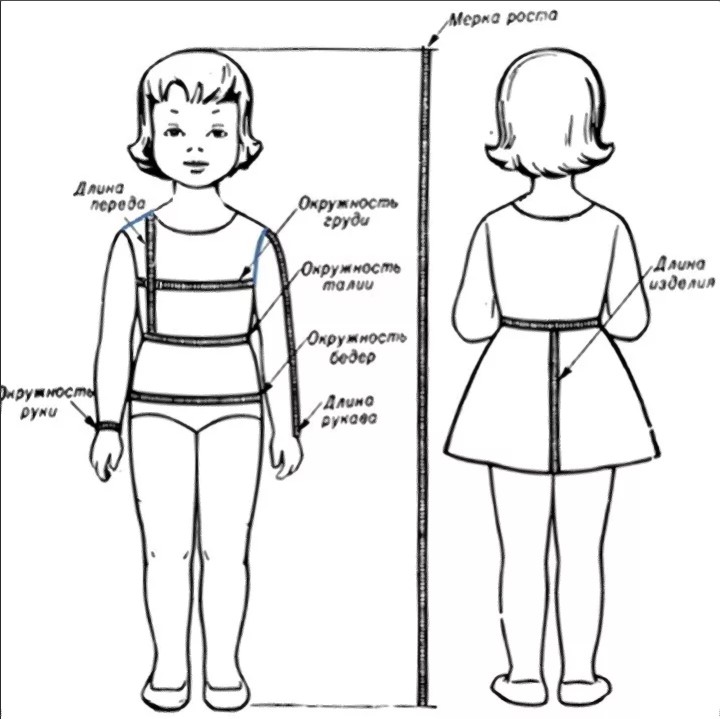
Important! Along the top edge of the skirt, if you do not provide a belt, you need to take into account the allowance for sewing on the elastic.
The number of frills depends on your desire, you can make them in several tiers, or you can sew several frills to one. This does not affect the cutting.
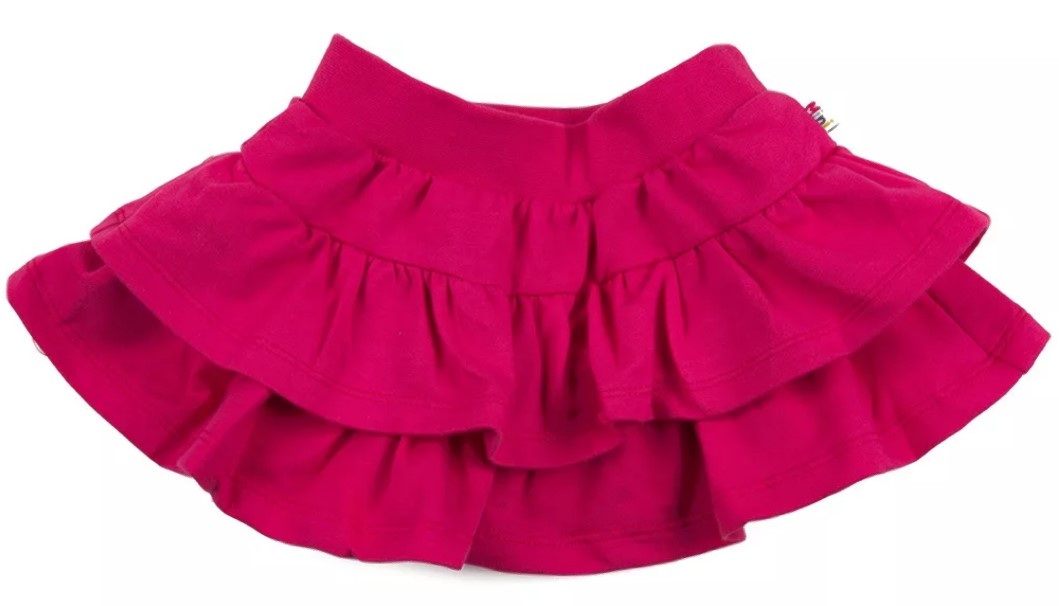
Advice! The younger your girl, the shorter and fuller her skirt should be. That is, you can place more short frills on her skirt.
Cut on fabric
It is important to note that when working with natural cotton fabrics, it is necessary to first decate the material before cutting in order to find out how much it sheds and also decreases in size. To do this, you need to wash the fabric and then iron it through a damp iron.
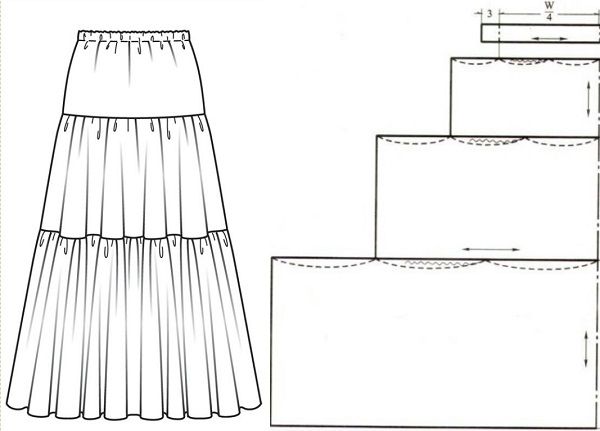
Stages of work:
- Lay out the pattern pieces on the treated fabric, taking into account the direction of the grain thread.
- Shallow, add seam allowances of 1.5-2 cm for cotton fabrics, 0.7-1.5 cm for non-flowing synthetic fabrics. The hem allowance depends on the method of folding the fabric.
- Cut it out.
Sewing the skirt parts in sequence
Frills can be sewn so that their top edge is on the wrong side (a). Or, on the contrary, we leave the upper edge processed with a narrow stitch on the front side of the skirt (b).
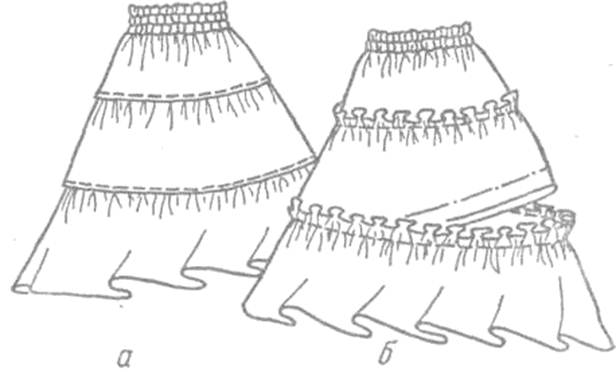 Progress:
Progress:
- We sew the fabric sections with an overlock stitch or a narrow zigzag stitch.
- The edges of the ruffles can be finished with a narrow stitch of the Moscow seam.
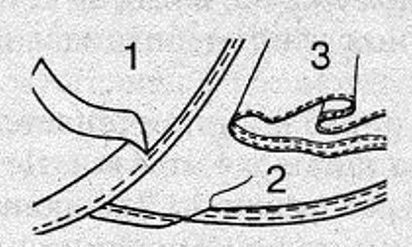
- We sew each tier or frill into a ring, for this we sew the side seam.
- We sew the lower frill to the upper one, laying folds, or evenly distributing the large length of the panel.
Advice! To distribute the fabric evenly, it is recommended to first pin it together, then baste it by hand, and only then sew the circular seams on a machine.
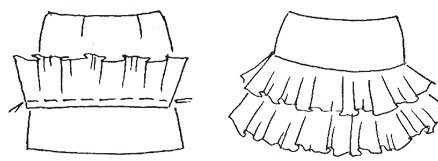
- After we have distributed all the tiers and frills. Then we sew the hem with a hidden seam that is convenient for you.
- You can also sew narrow ruffles onto the sections, which, in turn, can be decorated.
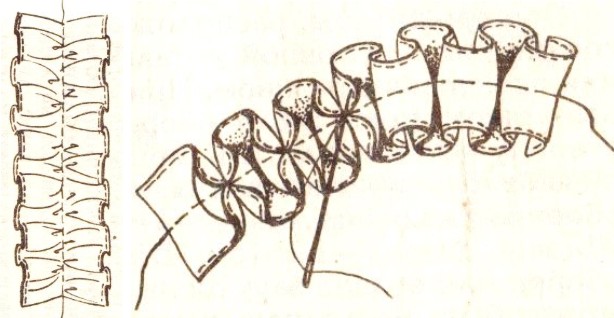
- We hem the top edge of the skirt and stitch it, leaving only a small area unsewn for the elastic.
- We put on a regular elastic band.
- Iron the skirt using an iron.
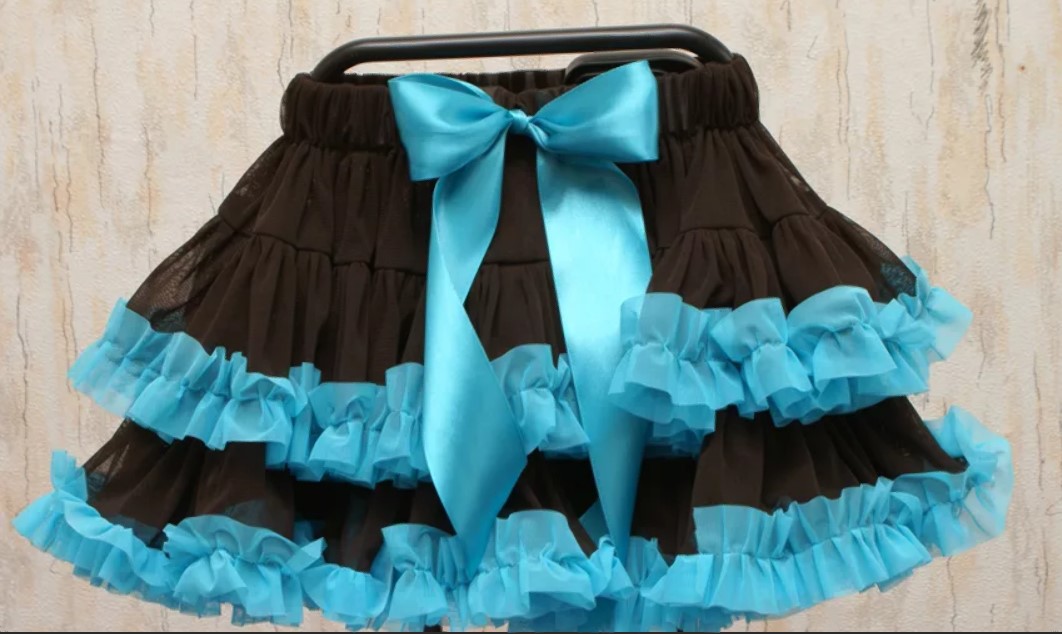
As finishing, you can use piping, bias tape, cords, and ribbons. Bows will decorate a skirt for a little girl, but neat lacing will suit an older girl.


 1
1